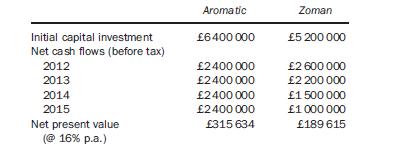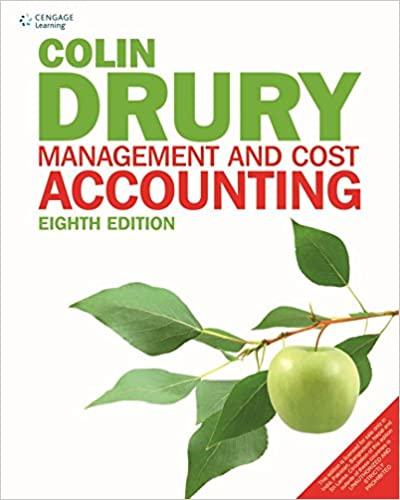Linamix is the chemicals division of a large industrial corporation. George Elton, the divisional general manager, is
Question:
Linamix is the chemicals division of a large industrial corporation. George Elton, the divisional general manager, is about to purchase new plant in order to manufacture a new product. He can buy either the Aromatic or the Zoman plant, each of which have the same capacity and expected four year life, but which differ in their capital costs and expected net cash flows, as shown below:

In the above calculations it has been assumed that the plant will be installed and paid for by the end of December 2011, and that the net cash flows accrue at the end of each calendar year. Neither plant is expected to have a residual value after decommissioning costs.
Like all other divisional managers in the corporation, Elton is expected to generate a before tax return on his divisional investment in excess of 16 per cent p.a., which he is currently just managing to achieve. Anything less than a 16 per cent return would make him ineligible for a performance bonus and may reduce his pension when he retires in early 2014. In calculating divisional returns, divisional assets are valued at net book values at the beginning of the year.
Depreciation is charged on a straight line basis.
Requirements:
(a) Explain, with appropriate calculations, why neither return on investment nor residual income would motivate Elton to invest in the process showing the higher net present value.
To what extent can the use of alternative accounting techniques assist in reconciling the conflict between using accounting-based performance measures and discounted cash flow investment appraisal techniques?
(b) Managers tend to use post-tax cash flows to evaluate investment opportunities, but to evaluate divisional and managerial performance on the basis of pre-tax profits.
Explain why this is so and discuss the potential problems that can arise, including suggestions as to how such problems can be overcome.
(c) Discuss what steps can be taken to avoid dysfunctional behaviour which is motivated by accounting-based performance targets.
Step by Step Answer:






